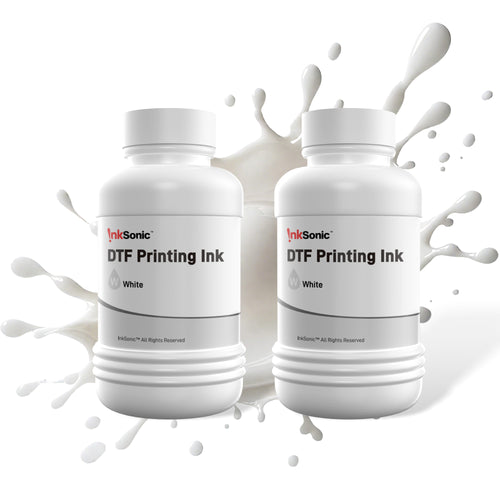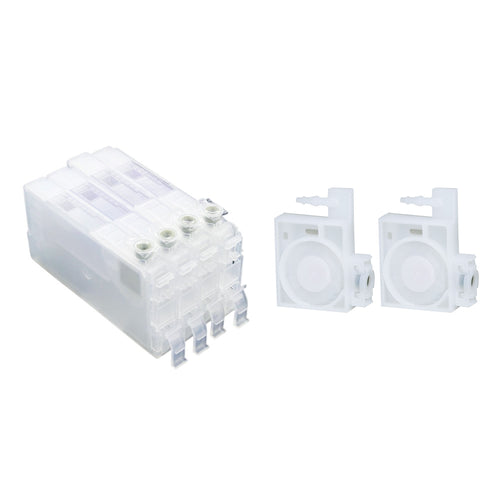Thinking of using DTF for your custom prints and wondering how long it actually lasts? You're not alone. Whether you’re a fashion startup, a DIY designer, or just someone who loves wearing bold, custom-printed tees, the longevity of your prints is a key concern. In this article, we’ll dive into how durable DTF (Direct-to-Film) printing really is—and why it might just be your best long-term choice.
1. What Is DTF Printing?

Direct-to-Film (DTF) is a modern printing method that transfers your design from a printed film onto fabric using heat and adhesive powder. It’s popular for printing on cotton, polyester, blends, and even dark fabrics, offering vivid colors, fine detail, and strong stretch resistance.
2. How Long Does a DTF Print Last
Here’s the good news:
With proper care and optimal print settings, a DTF print can last 80–100 washes without noticeable fading, cracking, or peeling.
Even under frequent use, high-quality DTF transfers are:
- Resistant to abrasion (tested to withstand tens of thousands of rubs)
- Safe for machine washing (tolerates hundreds of cycles when printed and cured correctly)
- Flexible and crack-free under stretch and movement
That means your printed hoodie, T-shirt, or uniform isn’t just for one season—it’s built to last.
3. What Factors Affect DTF Print Lifespan

Durability of DTF printing depends on a few key things:
Factor |
Description |
DTF Print quality |
A well printer and high-grade film result in sharper, longer-lasting prints. |
Ink and powder |
Premium DTF ink and adhesive powders bond better and resist fading. |
Heatpress settings |
Incorrect temperature or pressure can weaken adhesion. |
Fabric type |
DTF sticks best to cotton, poly, and blends with a smooth surface. |
Washing care |
Gentle cycles and avoiding high heat prolong print life. |
4. How to Maximize DTF Print Longevity at Every Printing Step
DTF prints can last 80–100 washes or more—but only if every step of the process is done right. Here's how to get the most out of your prints, from setup to final press:
4.1 File Preparation Matters

Start with a high-resolution design (at least 300 DPI) and use CMYK mode for color accuracy. Avoid over-saturation, and use proper RIP software settings for best ink layering.
Tip: Add a slight stroke or border to light-colored fonts when you print to light fabric. In case they vanish after transfer.
4.2 Accurate DTF Printer Settings

Set the correct print pass count (often 6–8 passes for higher quality), use proper ink density, and avoid banding or smearing. Maintain your printer head regularly to prevent clogged nozzles.
Tip: Allow the print to rest for 3–5 minutes before you apply the DTF powder. This helps you ensure the hot melt powder heats evenly.
4.3 Apply Powder Evenly

Use high-quality hot-melt powder, and ensure it's evenly coated across the entire printed surface. Shake off the excess to avoid rough textures and clumps. Incomplete powder coverage will lead to peeling and poor wash resistance.
4.4 Cure at the Right Temperature
Set the oven or heat press to 110–120°C (230–248°F) and cure the film for 2–3 minutes. Since time and temperature are inversely related, make sure you bake it long enough to ensure proper curing.

4.5 Pre-Press the Fabric
Before transferring the image, press the garment for 5 seconds to remove moisture and wrinkles. A flat surface ensures even bonding.
4.6 Heat Press with Precision
Apply the print using a firm press at 150–160°C (300–320°F) for 10–12 seconds. Use medium to high pressure for maximum adhesion.
Extra Tip: Post-Press Press
For a longer-lasting finish, add a second 5-second press using a Teflon sheet after peeling. This improves surface bonding and smoothness.
5. DTF vs Other Methods: Which One Lasts Longer
Print Method |
Durability |
Feel |
Application |
DTF |
⭐️⭐️⭐️⭐️⭐️ |
Slightly raised, soft touch |
Excellent on many fabrics |
Screen Printing |
⭐️⭐️⭐️⭐️ |
Soft feel |
Great for bulk, limited detail |
Sublimation |
⭐️⭐️⭐️⭐️⭐️ |
Seamless, part of the fabric |
Only on polyester |
Heat Transfer Vinyl (HTV) |
⭐️⭐️⭐️ |
Plastic feel, may peel |
Good for small runs |
DTF outperforms HTV and rivals screen printing, especially on cotton or dark fabrics where sublimation can’t compete.
6. How to Maintain Your DTF-Printed Garments Daily
Whether you're a T-shirt customization entrepreneur, an independent brand owner, a DIY enthusiast, or just an everyday consumer, DTF printing continues to impress with its softness, vivid colors, and strong durability. But if you want your prints to stay bright and beautiful for the long haul, proper daily care is essential.
As printing technicians often say: printing is easy—how the customer wears and washes the garment is what really matters. The following care tips are helpful not only for end users but also for small business owners, DIY sellers, and sourcing professionals.
6.1 Wash Inside Out
No matter how detailed or vibrant the design is, it won't survive endless friction. Turning your T-shirt inside out before washing reduces direct abrasion between the printed area and the inner drum of the washing machine, significantly extending the print’s lifespan.
Tip: Whether you're a seller or buyer, always add this tip to your care label or instruction card.
6.2 Use Cold Water
Whether you're doing laundry at home or running a small print-on-demand studio, always wash DTF garments in cold water below 40°C (104°F). Hot water can weaken the hot melt adhesive and cause the design to crack or fade over time.
6.3 Avoid Harsh Detergents or Bleach
Many small brand sellers overlook this issue, thinking “as long as the shirt stays intact, it’s fine.” But harsh chemical detergents and bleach can break down the printed film over time.
Suggestion: Include a care card in your packaging recommending non-bleach, mild detergents for longer-lasting color and adhesion.
6.4 Air Dry Whenever Possible

According to feedback from brand owners, identical batches of shirts show dramatically different results after a few months—depending on whether they were air-dried or machine-dried. High heat is a silent killer for DTF prints. If you must use a dryer, switch to a low-temperature gentle cycle.
6.5 Avoid Ironing Directly on the Print
Some consumers like to iron their shirts for a crisp look—but ironing directly on the DTF print is risky. The high heat can melt or warp the transfer film.
Correct way: Always iron from the inside or place a thin cloth between the print and the iron.
6.6 Don’t Dry Clean
DTF prints don’t react well to harsh solvents in dry cleaning chemicals. They can damage the ink and adhesive layers, often causing delamination.
If you're a designer or custom brand owner, consider clearly labeling your product as "Not dry-clean safe" to prevent customer mishandling.
💡 Bonus Tip: Storage Matters Too
If you often store printed inventory, keep it away from humidity, high temperatures, and direct sunlight. Long-term UV exposure can cause fading, brittleness, and adhesive weakening.
7. Is DTF Printing Right for You

Absolutely—if you want:
- Long-lasting prints for branded apparel
- Durable designs for kids’ clothes, sportswear, or work uniforms
- Eye-popping detail for fashion lines or merch drops
- A reliable process that can handle machine wash, stretch, and daily wear
8. Final Verdict: It’s Built to Last
So, how long does DTF print last? Up to 80–100 washes. Tens of thousands of rubs. Hundreds of machine wash cycles. DTF is built not just for style—but for the long haul. If you're looking for prints that can take a beating, look amazing, and still stay intact, DTF is the answer.

































